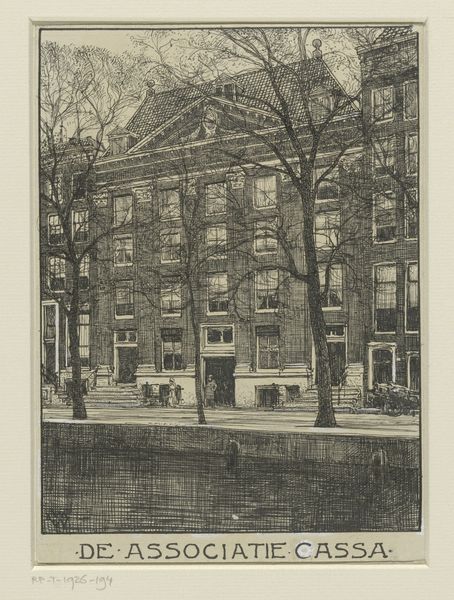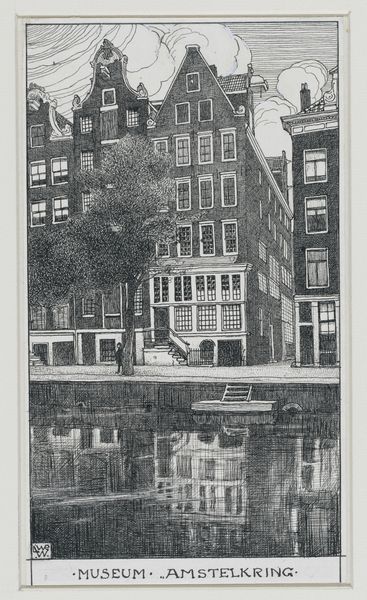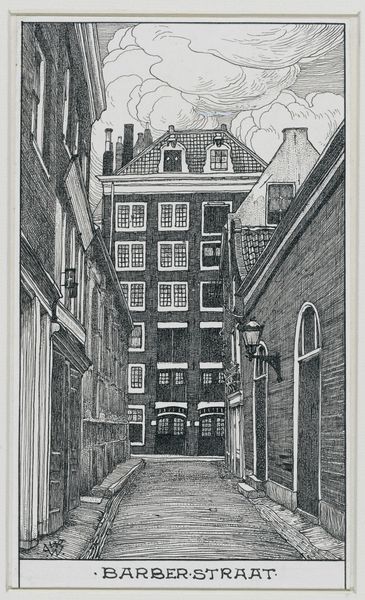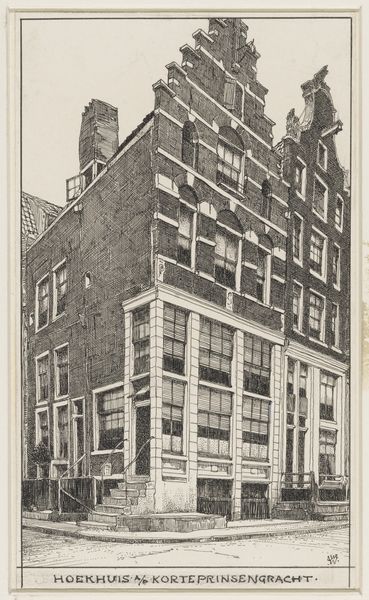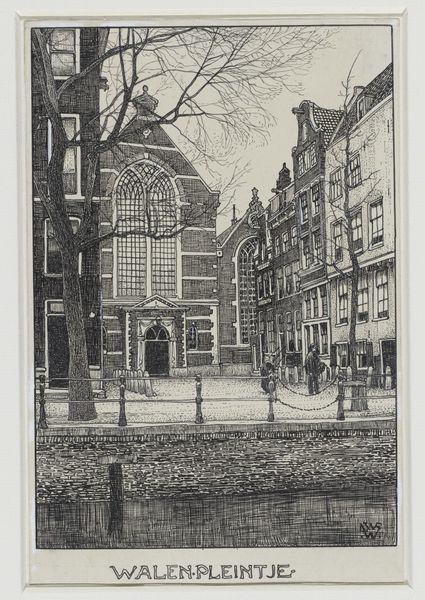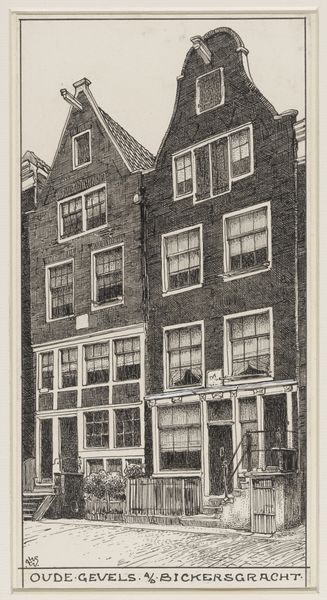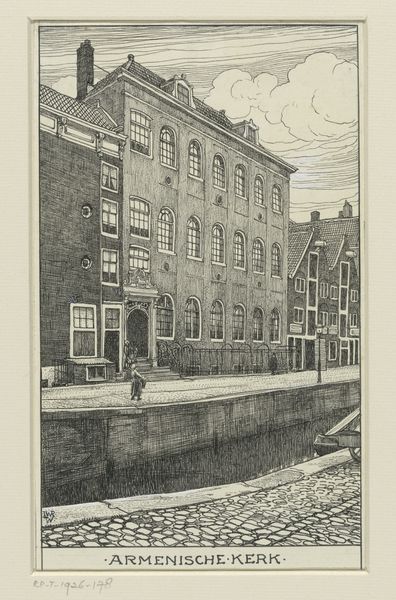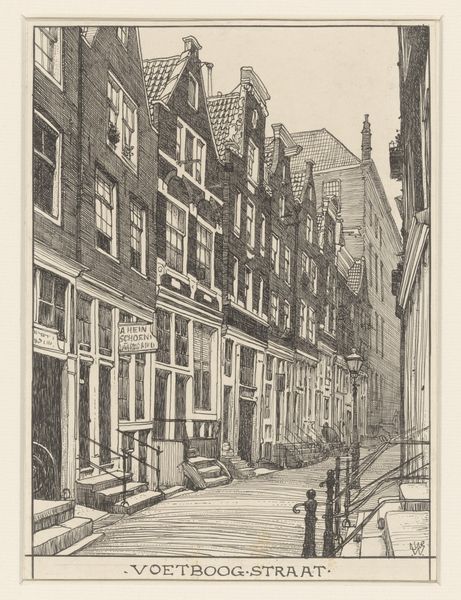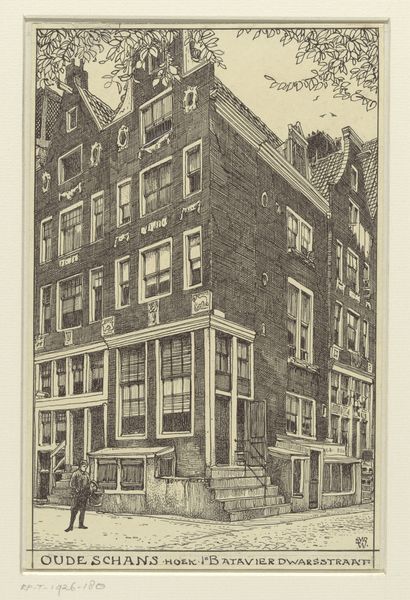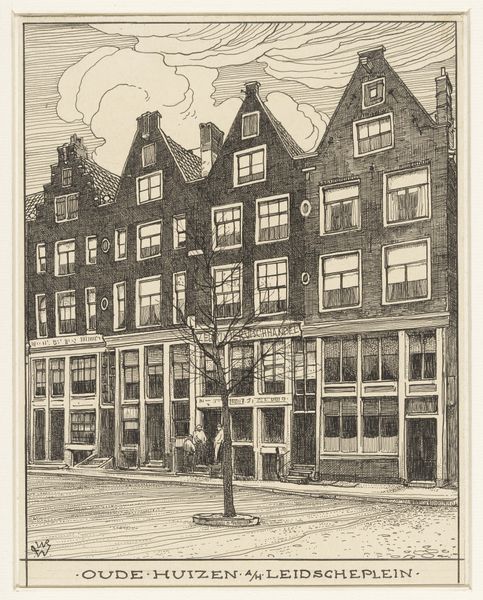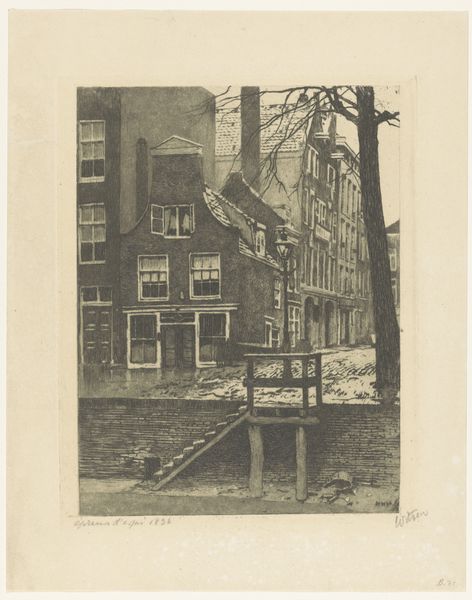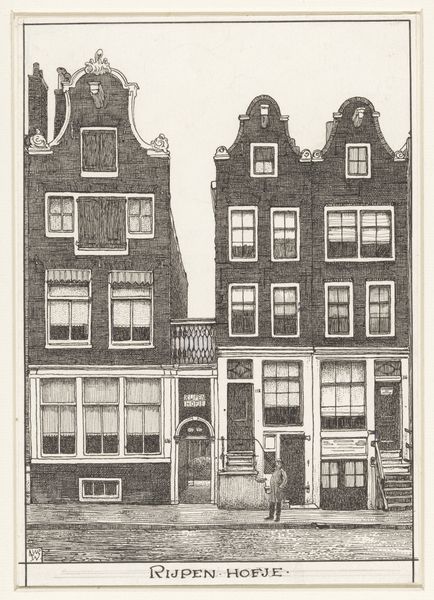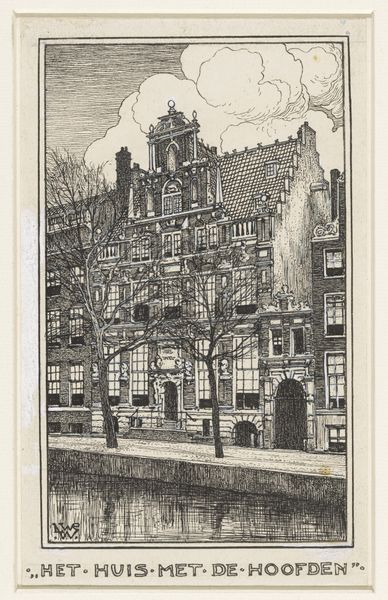
drawing, print, paper, ink, architecture
#
drawing
#
architectural landscape
# print
#
paper
#
ink
#
architectural drawing
#
architecture drawing
#
cityscape
#
street
#
architecture
Dimensions: height 191 mm, width 131 mm
Copyright: Rijks Museum: Open Domain
Editor: Here we have "Pieters Hal te Amsterdam," a drawing and print made with ink on paper, created sometime between 1870 and 1926 by Willem Wenckebach. It’s quite a detailed cityscape, almost photographic in its precision. What catches your eye about this work? Curator: What I find compelling is the meticulous depiction of the architecture and its materials. Notice the varying textures Wenckebach achieves using only ink. The brickwork, the reflections in the water – each evokes a different materiality. Consider also the social context implied: a bustling city, dependent on trade and transport, suggested by the very structure of the buildings and the cart on the street. Editor: That's an interesting take, I didn’t really consider the materials of the city. I was more focused on the mood and the architecture. Curator: Precisely. The “mood” you perceive is itself a product of material reality. The density of the built environment, the availability of resources reflected in the construction… these are all interwoven. And think about Wenckebach's labor in creating this image. The repetitive, almost industrial, process of applying ink to paper mirrors the labor that built the city itself. How does understanding the artist’s process alter your understanding of the final product? Editor: It makes me think about the drawing less as just a pretty picture, and more about the city, labor, and trade which influenced him in Amsterdam. It is almost like looking at city planning made aesthetic through this material practice. Curator: Exactly! The act of creation is tied to broader systems of production and consumption. We are forced to engage with not only the finished artwork but with its history and its societal impact. Editor: Thank you! I hadn’t considered the link between artistic labor and the subject portrayed. It’s like the drawing is itself a tiny part of the very thing it’s depicting! Curator: Indeed. It invites us to rethink boundaries between art, labor, and material culture.
Comments
No comments
Be the first to comment and join the conversation on the ultimate creative platform.
